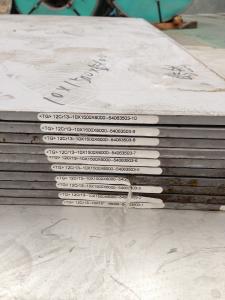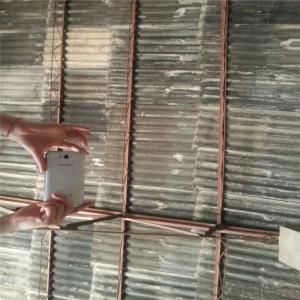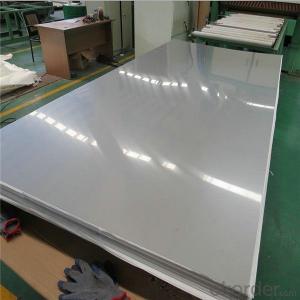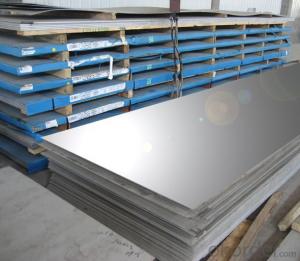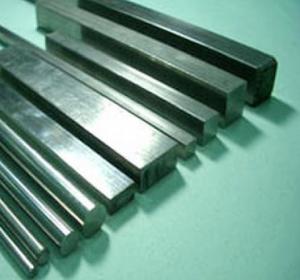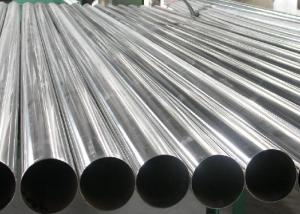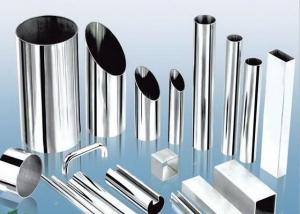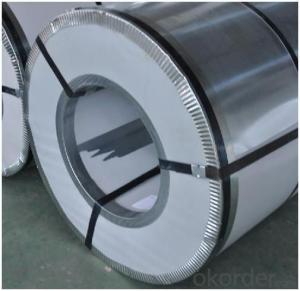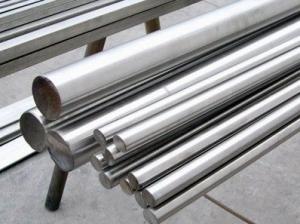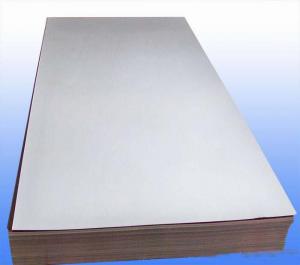Stainless Steel Sheet/Plate 401 with Wear Resistances
- Loading Port:
- China main port
- Payment Terms:
- TT OR LC
- Min Order Qty:
- 50 m.t.
- Supply Capability:
- 10000 m.t./month
OKorder Service Pledge
OKorder Financial Service
You Might Also Like
Specification
Stainless Steel Sheet/Plate 401 with Corrosion Resistance
Description
Stainless steel is a production which not easy rust,acid resistance and corrosion resistance,so it is widelyused in light industry,heavy industry,daily necessities and the decoration industry.my company long-termsupply stainless steel porducts including:stainless steel sheet,stainless steel coil and stainless steel tube.
Main Features
•Escalator, Elevator, Doors
•Furniture
•Production tools, Kitchen appliances, freezers, cold rooms
•Auto Parts
•Machinery and Packaging
•Equipment and Medical devices
•Transport system
Specifications
Description | steel sheet,hot rolled steel sheet,cold rolled steel sheet, steel sheet,sheet,steel plate |
Standard | ASME, ASTM, EN ,BS,GB,DIN, JIS etc |
Application | Steel sheet applies to construction field, ships building industry, petroleum & chemical industries, war and electricity industries, food processing and medical industry, boiler heat exchanger, machinery and hardware fields. |
Surface Finish
Surface finish | Characteristics and application |
2B | The surface brightness and flatness of no2B is better than no2D. then through a special surface treatment to improve its mechanical properties,No2B could nearly satisfy comprehensive uses. |
No.1 | Polished with abrasive belt of grit#100-#200, have better brightness with discontinuous coarse stria, used as inner and external ornaments for building, electrical appliances and kitchen utensils etc. |
No.4 | Polished with abrasive belt of grit #150-#180,have better brightness with discontinuous coarse stria, but thinner than No3, are used as bathtub buildings inner and external ornaments electrical appliances kitchen utensils and food processing equipment etc. |
HL | Polished with abrasive belt of grit #150-#320 on the NO.4 finish and has continuous streaks, mainly used as buildings ornaments elevators, door of building, frontal plate etc. |
BA | Cold rolled, bright annealed and skin-passed, the product have excellent brightness and good reflexivity like mirror, kitchen apparatus, ornament etc. |
8K | The product have excellent brightness and prefer reflexivity can to be the mirror. |

- Q: 304 why is stainless steel magnetic?
- 304 stainless steel after cold processing, the structure of the structure will also change to martensite, and the greater the deformation degree of cold work, the more martensite transformation, the greater the magnetism. Like a lot of stainless steel wire, made straight, no obvious induction, but it is bent into a rectangular or circular, and produce some magnetic for cold bending deformation is large, especially the angle of magnetic is more obvious.In order to eliminate the magnetism of the 304 stainless steel, the austenite structure can be recovered by high temperature treatment so as to eliminate magnetism.Special remind is, 304 magnetic stainless steel because it causes, and other materials such as stainless steel, carbon steel, magnetic 430 is not the same level, that is to say the magnetic stainless steel 304 is always weakly magnetic.
- Q: Are stainless steel sheets suitable for pharmaceutical cleanrooms?
- Yes, stainless steel sheets are highly suitable for pharmaceutical cleanrooms. Stainless steel is widely used in the pharmaceutical industry due to its excellent resistance to corrosion, durability, and ease of cleaning. It is a non-porous material that does not harbor bacteria or contaminants, making it ideal for cleanroom environments where maintaining a sterile and hygienic environment is crucial. Stainless steel sheets are also easy to sanitize and withstand harsh cleaning agents without deteriorating or releasing particles that could contaminate the pharmaceutical products being manufactured. Additionally, stainless steel has a smooth and non-shedding surface, which prevents the accumulation of particles and facilitates cleanroom maintenance. Overall, stainless steel sheets are an excellent choice for pharmaceutical cleanrooms to ensure compliance with strict cleanliness and sterility requirements.
- Q: What are the different types of embossed patterns available for stainless steel sheets?
- There are several different types of embossed patterns available for stainless steel sheets, including diamond, quilted, linen, leather, and checker plate patterns.
- Q: What is the electrical resistance of stainless steel sheets?
- The electrical resistance of stainless steel sheets can vary depending on several factors, such as the grade of stainless steel, its thickness, and the specific properties of the alloy used. Generally, stainless steel exhibits a relatively high electrical resistance when compared to other metals. This is primarily due to its composition, which includes a significant amount of chromium and other alloying elements that impede the flow of electric current. However, the precise value of electrical resistance can range from a few micro-ohms per square meter to several ohms per square meter, depending on the specific grade and thickness of the stainless steel sheet. Consequently, it is essential to refer to the manufacturer's specifications or conduct specific electrical resistance tests to obtain accurate values for a particular stainless steel sheet.
- Q: How do I determine the hardness of stainless steel sheets?
- To determine the hardness of stainless steel sheets, there are a few methods you can use. One common method is the Rockwell hardness test, which measures the depth of penetration of an indenter into the material. The Rockwell scale has different scales depending on the material, so you will need to use the appropriate scale for stainless steel. To perform the Rockwell hardness test, you will need a Rockwell hardness tester and a diamond or tungsten carbide indenter. Start by placing the stainless steel sheet on a flat, stable surface. Then, position the indenter on the surface of the sheet and apply a minor load. Once the minor load is applied, proceed to apply the major load until it reaches its maximum value. Once the load has been applied and released, the hardness value will be displayed on the Rockwell hardness tester's dial or digital display. This value corresponds to a specific hardness scale, such as HRC for stainless steel. It is important to note that the Rockwell hardness test provides a relative measurement of hardness and does not necessarily reflect the material's physical properties. Additionally, the hardness of stainless steel can vary depending on factors such as the alloy composition, heat treatment, and manufacturing process. Therefore, it is recommended to consult the material's specifications or conduct additional tests to obtain more accurate and comprehensive information about the stainless steel sheet's hardness.
- Q: How do you determine the grade of a stainless steel sheet?
- The grade of a stainless steel sheet is determined based on its composition, physical properties, and performance characteristics. It is typically identified by a numerical code, such as 304 or 316, which indicates the specific alloy and its respective properties. This information can be obtained through various methods, including visual inspection, chemical analysis, and referencing industry standards and specifications.
- Q: What is stainless steel AB board, please?
- Both 2B and BA can be polished into 8K mirror panels, but 2B requires more polishing steps, and the BA can only be polished to achieve the 8K effect. Depending on the end product, there is a difference in whether the BA is polished and some BA products do not need to be polished and used directly.
- Q: What are the different types of stainless steel sheets available?
- There are several different types of stainless steel sheets available, including austenitic, ferritic, martensitic, duplex, and precipitation-hardening stainless steel sheets. Each type has its own unique properties and characteristics, making them suitable for various applications in industries such as construction, automotive, and food processing.
- Q: Can stainless steel sheets be used for signage or lettering?
- Yes, stainless steel sheets can be used for signage or lettering. Stainless steel is a highly durable and versatile material that is commonly used in various applications, including signage. It offers excellent resistance to corrosion, making it suitable for both indoor and outdoor use. Stainless steel sheets can be easily fabricated and cut into different shapes and sizes, allowing for the creation of customized signage and lettering designs. Additionally, stainless steel has a sleek and modern appearance, making it an attractive option for signage in commercial or professional settings. Overall, stainless steel sheets provide a reliable and long-lasting solution for signage and lettering needs.
- Q: What is the abrasion resistance of stainless steel sheets?
- Stainless steel sheets are widely acknowledged for their high level of abrasion resistance. They possess exceptional durability and hardness, which render them impervious to damage caused by friction or contact with abrasive substances. The extent of this abrasion resistance can differ, depending on factors such as the grade and finish of the stainless steel sheet, as well as the particular purpose it serves. Nonetheless, stainless steel sheets are renowned for their outstanding ability to withstand scratches, scuffs, and other types of abrasion, thereby making them a preferred option across diverse industries that prioritize longevity and durability.
Send your message to us
Stainless Steel Sheet/Plate 401 with Wear Resistances
- Loading Port:
- China main port
- Payment Terms:
- TT OR LC
- Min Order Qty:
- 50 m.t.
- Supply Capability:
- 10000 m.t./month
OKorder Service Pledge
OKorder Financial Service
Similar products
Hot products
Hot Searches
Related keywords















